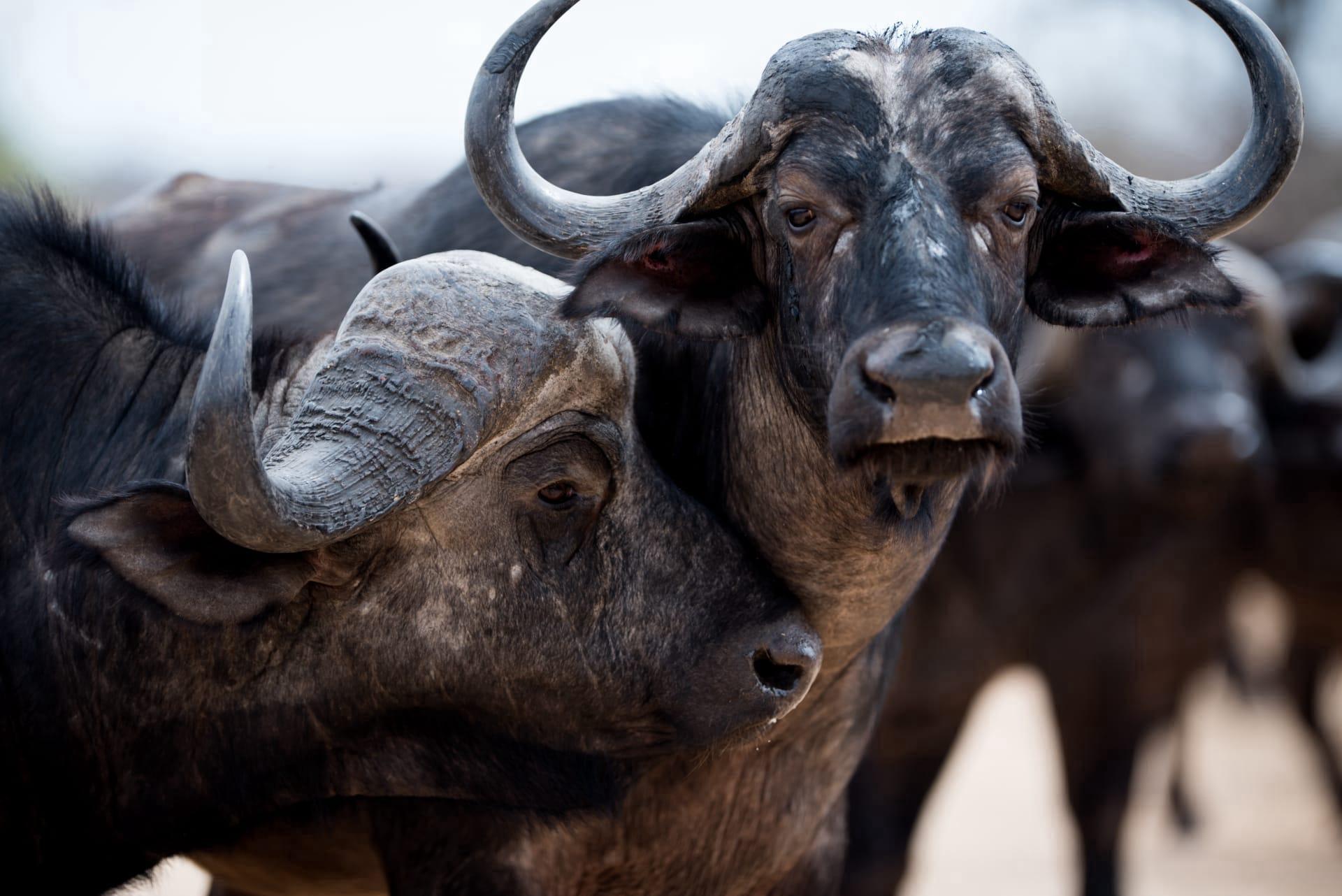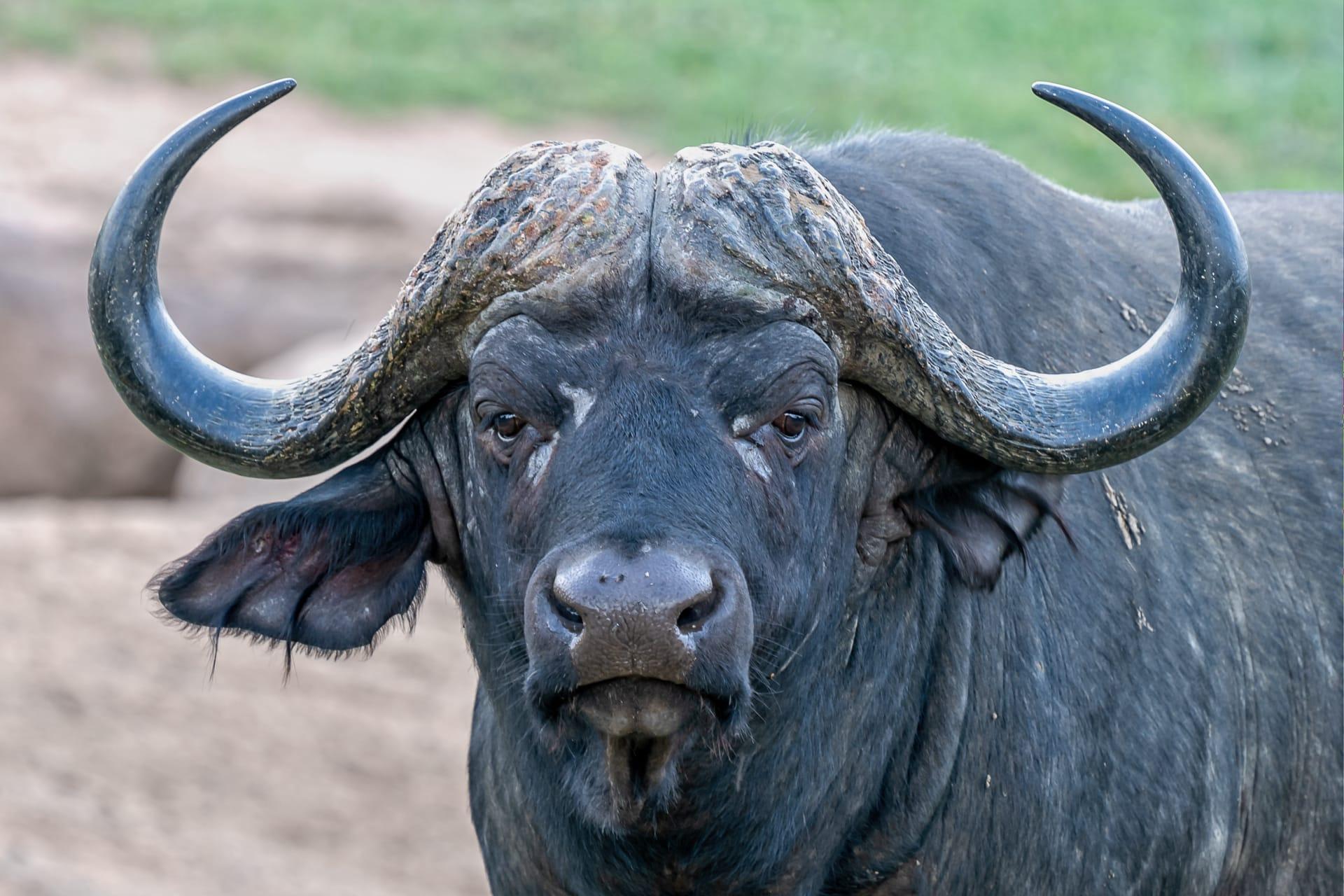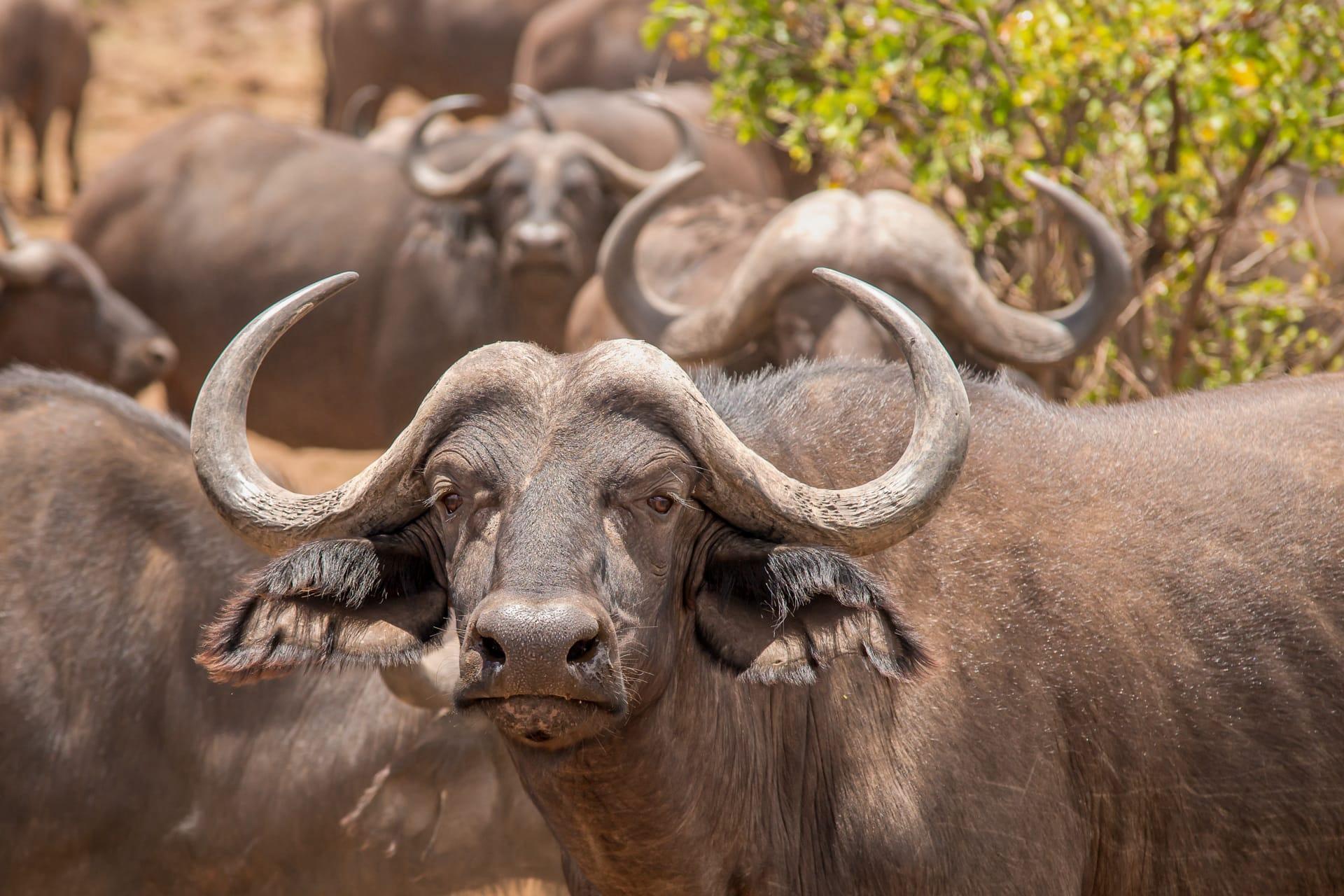African Buffalo Trivia
- Home /
- Trivia Question /
- Animal /
- African Buffalo Trivia
1
Question: What is the average weight and size of an adult African Buffalo?
Answer: Adult African Buffaloes are quite hefty, typically weighing between 500 to 900 kilograms. They are large and robust animals, with males being larger than females. In terms of size, they usually stand about 1.0 to 1.7 meters tall at the shoulder and can reach lengths of up to 2.8 meters, including the body and head.
Question: How long do African Buffaloes live in the wild and in captivity?
Answer: In the wild, African Buffaloes have a lifespan ranging from 15 to 25 years. However, in captivity, where they are protected from predators and receive regular veterinary care, they can live up to 29 years. Their longevity is influenced by factors like habitat quality, predation, and human interference.

2
Question: Is it true that African Buffaloes can't run fast because of their size?
Answer: Contrary to the common misconception, African Buffaloes are quite agile and can run at speeds of up to 57 kilometers per hour. This is impressive considering their large size and weight. They are capable of quick and sudden movements, especially when threatened.
Question: Do African Buffaloes attack humans unprovoked?
Answer: African Buffaloes are often portrayed as extremely aggressive, but they usually do not attack humans without provocation. They tend to be more defensive and attack mainly when they feel threatened, cornered, or when protecting their young. However, they are still considered one of the more dangerous animals in Africa.

3
Question: What is the social structure of African Buffalo herds?
Answer: African Buffaloes have a complex social structure. Herds can consist of several hundred individuals, comprising females, calves, and subordinate males. The herds are matriarchal, with older, experienced females leading and making decisions. Dominant males usually stay at the periphery to protect the herd from predators.
Question: How do African Buffaloes contribute to their ecosystem?
Answer: African Buffaloes play a crucial role in their ecosystems. By grazing, they help maintain the grasslands, preventing overgrowth and promoting biodiversity. Their movements create paths used by other animals, and their dung enriches the soil, aiding plant growth. They are also prey for large predators, integral to the food chain.

4
Question: What are the main threats to African Buffalo populations?
Answer: The primary threats to African Buffaloes include habitat loss due to human expansion, competition with livestock for resources, and diseases like bovine tuberculosis and foot-and-mouth disease. Poaching for meat and horns also poses a significant threat to their populations.
Question: Can African Buffaloes swim?
Answer: Yes, African Buffaloes are strong swimmers. They often use water as a refuge from predators and can cross rivers and swamps to reach new grazing areas. Swimming also helps them cool down in the hot African climate and get rid of parasites.

5
Question: What is the diet of the African Buffalo?
Answer: African Buffaloes are herbivores, primarily feeding on grass. They consume a wide variety of grass species, and their diet changes with the season, depending on the availability of different grasses. They also need to drink water regularly, so they are often found near water sources.
Question: How do African Buffaloes communicate with each other?
Answer: African Buffaloes use various sounds, body language, and scents to communicate. They make vocalizations like bellows, grunts, and calls, particularly in social interactions and when alarmed. Their body language, such as head nods, movements, and facial expressions, conveys different messages within the herd. Scent marking is also a form of communication, especially for males establishing territory.